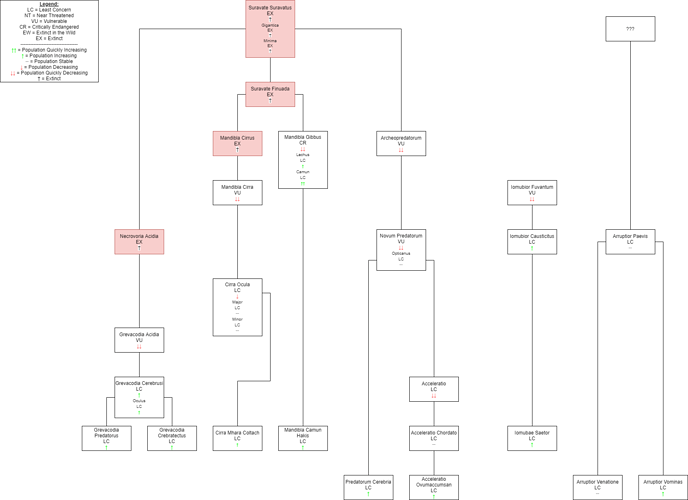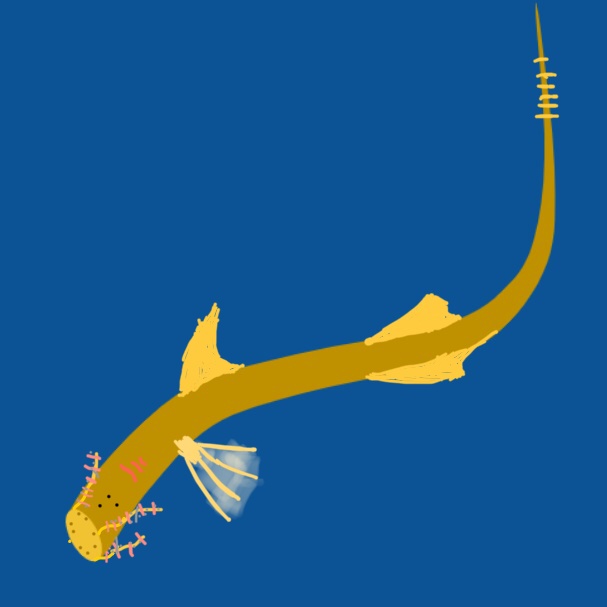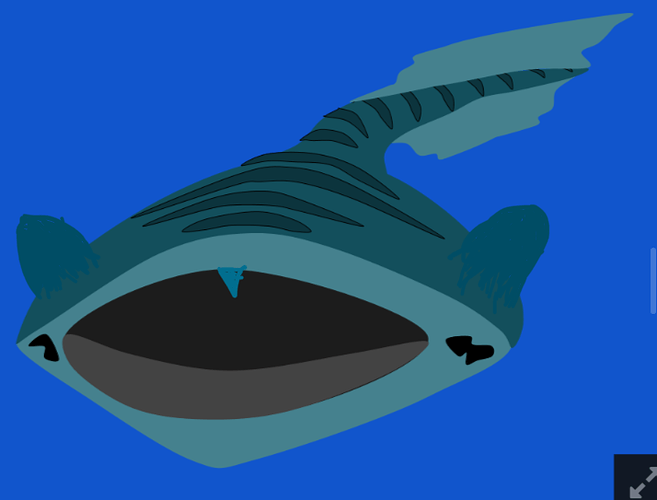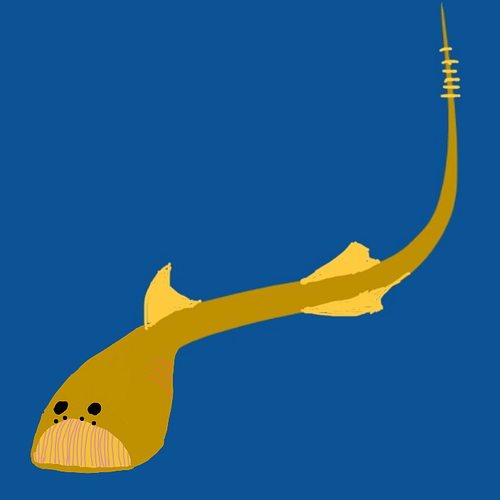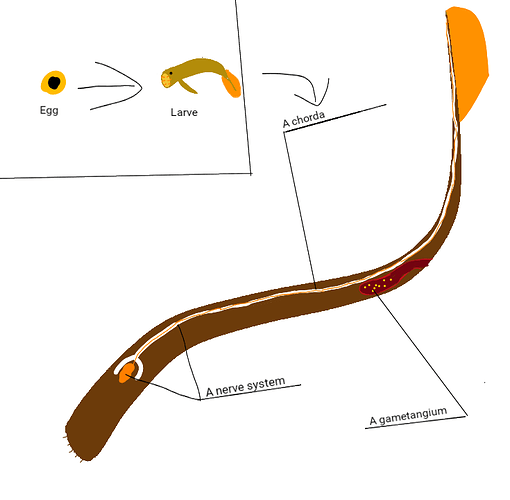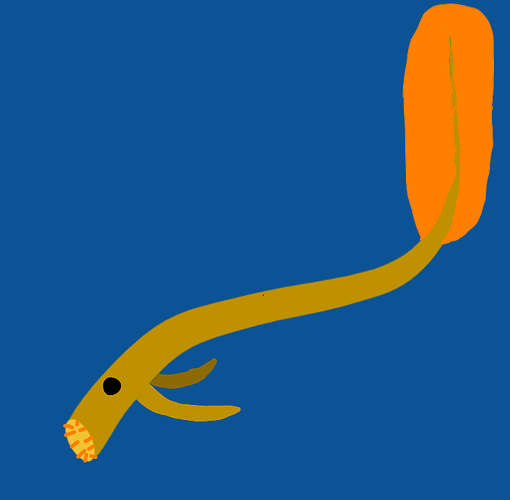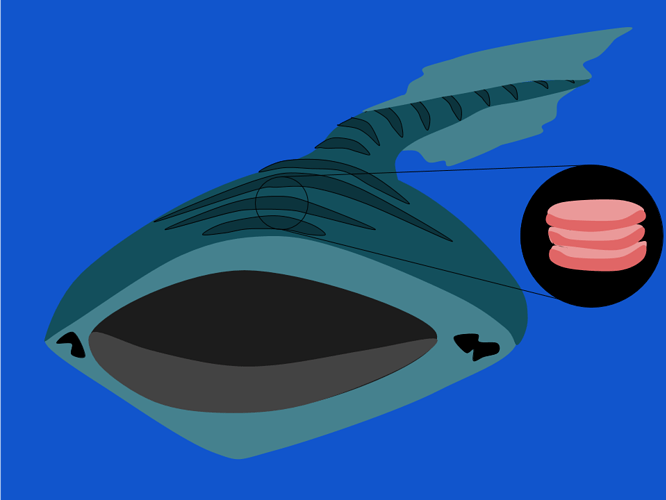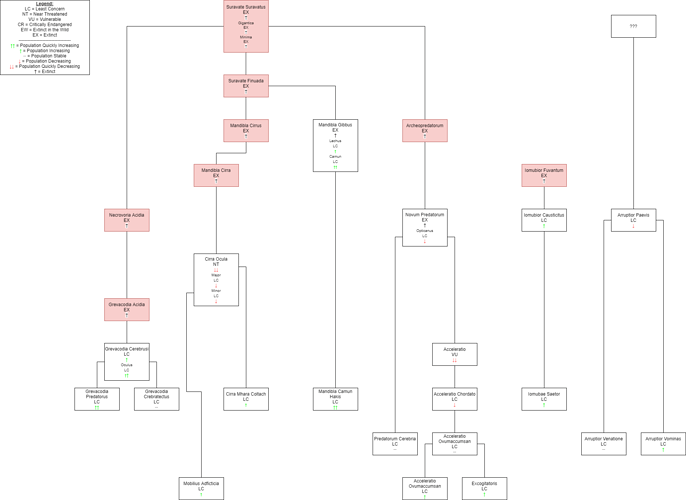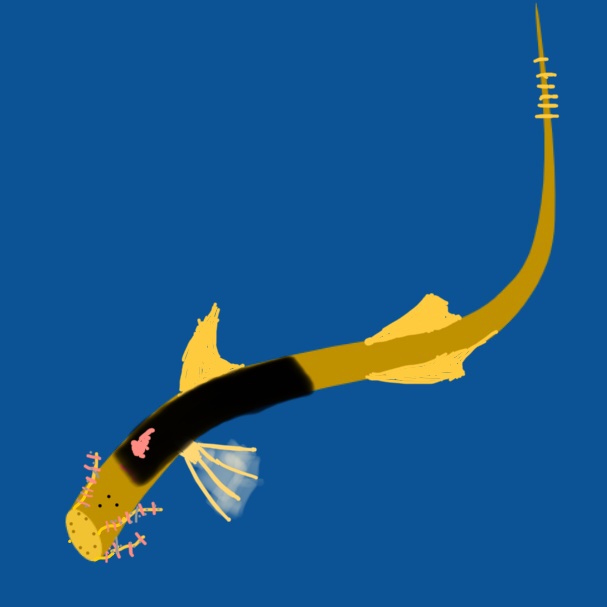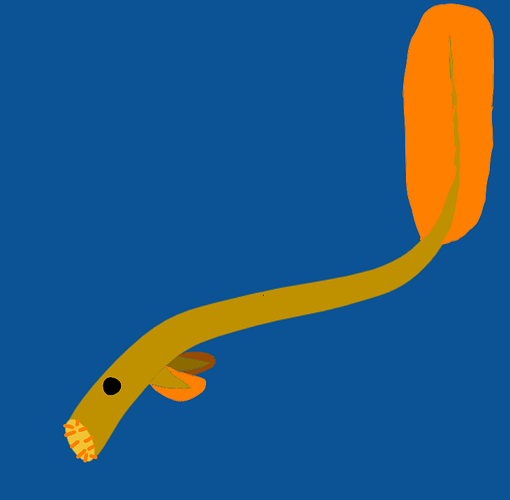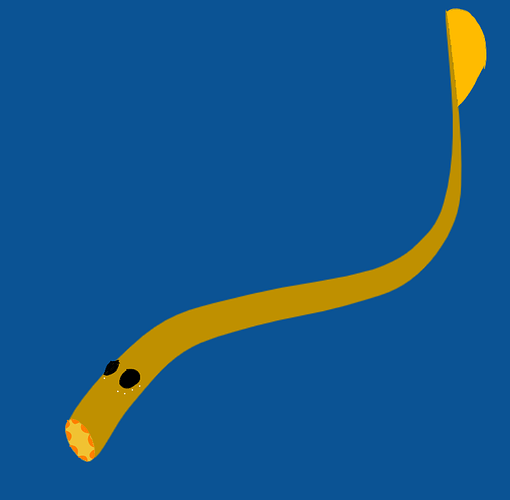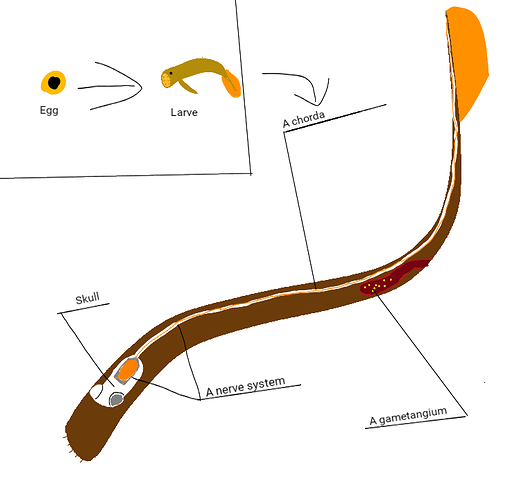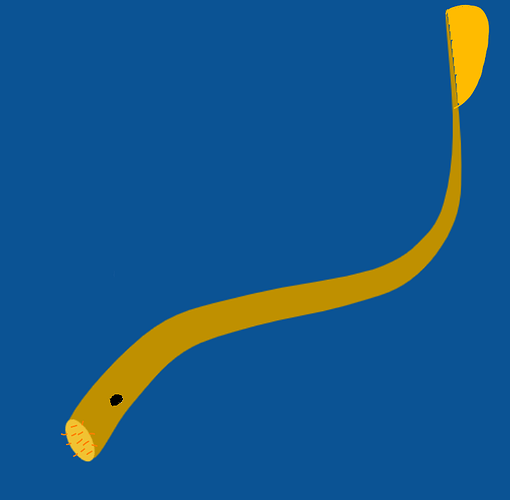Yeah, it’s much better! I would put it on the sùilean right now. Also, Oofer, if you could please size the brain down just a little, that would make some more sense. Thanks! I will update at the same time that I always do.
Good now? Look up. It should be better
It looks much better, thanks! Also, thanks for changing the brain size, Oofer!
I was planning on putting this out yesterday, but I’ll do it now cause I forgot.
Behavior Template
Species:
Behavior Change, Description, and cause of development (why did this behavior come to be?)
Should we only do this if the species have brains? Or is this for everything?
It can be used for any species, as even cells have behaviors depending on the environment around them.
New Species: grovacodia cerebrusi (oculus)
Old Species: grevacodia cerebrusi (normal)
changes: this subspecies evolves an eyespot.
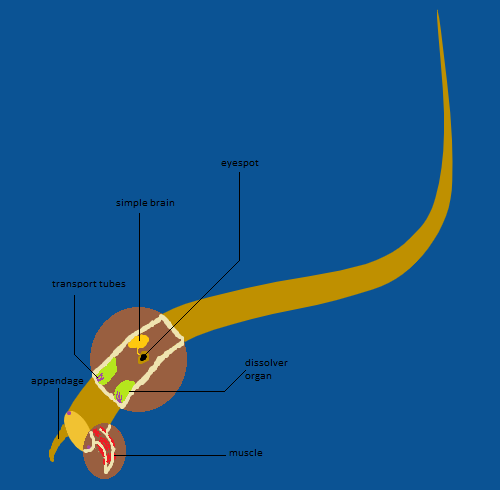
new species: predatorum cerebria
old species: novum predatorum opticanus
changes: cerebria evolves a simple brain near its eyespots.
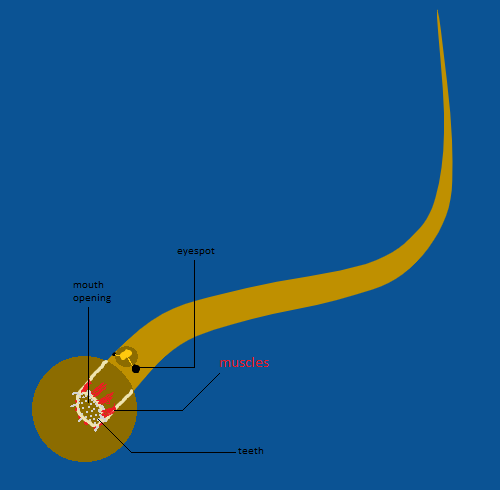
New Species: grovacodia predatorus
Old Species: grevacodia predatorus
changes: predatorus evolves bumps on its grevacods, helping it grab things a little bit easier.
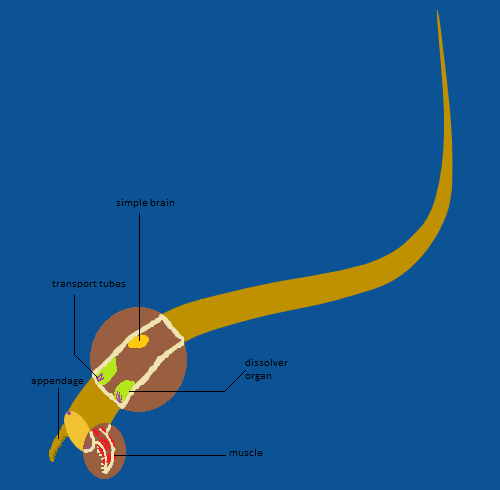
new species: novum predatorum opticanus
old species: novum predatorum opticanus
changes: opticanus’s teeth get larger and sharper.
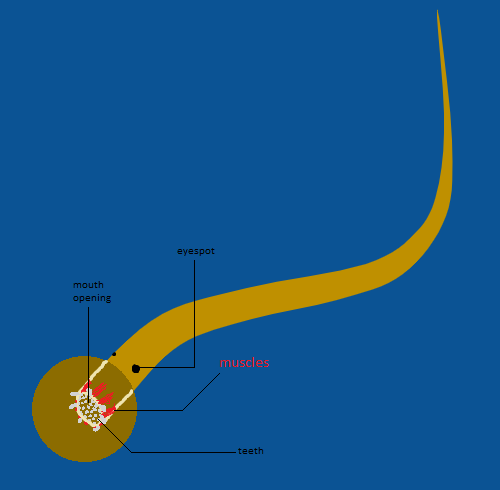
The Surav evolve, as well as the Arruptiors. The race is on. The Coltach evolves a new head shape, which acts like a bucket of sorts, allowing it to filter more plankton, and it’s filters change shape. Acceleratio Ovumaccumsan gains an interesting evolution in which it has an egg, the egg gets fertilized, and a larva is made. This larva has a fin, and it’s tail fin wraps around the whole tail instead of only part. It only feeds on the corpses of the arruptiors, which have been seen being scavenged clean by these larvae. At the end of this cycle, it digs itself a hole (very hard without the Grevacods, or any other tool), and emerges as a full grown Ovumaccumsan. The Arruptior Venatione has evolved appendages to drag worms in. Currently, these don’t do much, seeing as the worms are too small to really be held by the appendages, but they have not significantly impacted the Venatione. The Hakis has evolved appendages that are extremely skinny, but help it to semi-walk across the sandy ocean floor. It allows it to move around easier. (Also, for the back thing, that was just a dynamic pose I put the worms in. Normally, they’re straight as boards.) Cirra Ocula Major has gained a brain, and now remembers where it has seen predators, and where it has seen food. The Minor, on the other hand, has gained fins, and is now omnivorous. The Arruptior also has another change, the Vominas. These Vominas eat the toxic algae, which allow them to store toxins in pouches near their eyes. They release these near Surav swarms in order to confuse them and to make eating easier. Grevacodia Cerebrusi has developed a new subspecies, the Oculus, which has gotten an eyespot. It acts the same as it’s progenitor. Predatorum Cerebria has evolved from the Novum, and it has a simple brain in order to better process the light streaming into it’s eyespots. The Grevacodia predatorus has evolved bumps on it’s grevacods, which give it a bit more friction. This causes them to be able to grab things and not let them slip out much easier. The Opticanus’ teeth have grown sharper and larger, allowing them to rip and tear.
Sorry for the short pots, I wanted to do a bit more but I am time constrained. See you all tomorrow!
New Species: Mobilius Adficticia
Old Species: Cirra Ocula Minor
Changes: Adficticia has evolved resistance to the causticus and iombae. Its newest fin has moved farther out, and a appendage holds the fin against its body. The fin can now rotate 30 degrees in any direction.
Behavior: Adficticia hunts live prey whenever possible, and after failed hunts it rests and eats plants to rejuvenate itself.
New Species: Mandibla Camun Hakis
Old Species: Mandibla Camun Hakis
Changes: Hakis has evolved spots on the top of its body to confuse predators. Their laying appendage has become hard, like a plow.
Behavior: Hakis live in large swarms. By dragging their laying appendages across the ground, the create small ditches. Hakis lays their eggs in these. The way the Hakis move, they look like a moving mass of ground.
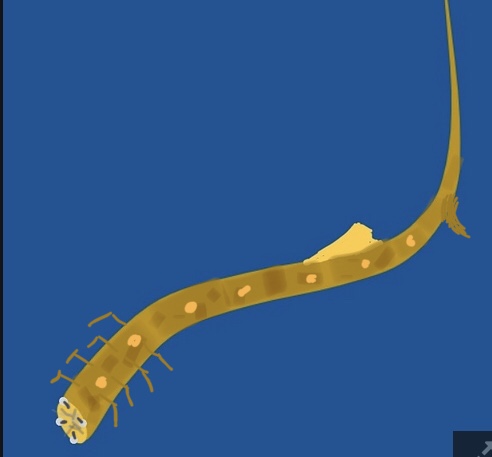
New Species: Arruptior Vonimas
Old Species: Arruptior Vonimas
Changes: Vonimas has changed its venom releasing process. It’s lumps have become larger to hold more, and it has evolved a small, triangular stump on its mouth. Vonimas shoots its venom out of this.
Behavior: nothing new.
New species: cirra mhara coltach
Old species: cirra mhara coltach
Changes: coltach has evolved a bigger eye
Behavior change: nothing
New species: excogitatoris
Old species: acceleratio ovumaccumsan
Changes: excogitatoris has evolved a a brain which they use it to remember their nest and a longer chorda and on the front of the chorda has created a proto skull (the C at the front end of the chorda) that defends the brain it is more sturdier then the rest of the chorda
Behavior changes: they now remember their nest the male stays near the nest and protects the eggs before they hatch the female brings food to male
New species: chaneilinbheach
Old species: acceleratio ovumaccumsan
Changes: without the metamorhphosis has chaneilinbheach has lost his chorda but in change has earned a encreased agility and simillar livestyle to the larvea
Changes: nothing new
Not posting today, sry  waiting for Tea, or until tmw
waiting for Tea, or until tmw
well you don’t have to wait.
General Scheme of the Arruptior Genus
Appearance: 1.25-1.75 meters lengthwise, ⅔ meters widthwise (at the mouth). A dark aquamarine color, with a slightly less aquamarine on the underside, the mouth, and the fins, and more on stripes that have appeared on the body.
Intelligence Level: Aware of the environment, would not be able to recognize itself in a mirror, has memory, cognition, and the ability to learn from faulty actions, although only if those actions cause major harm to it. Can discern between ‘a little’ and ‘a lot’, but cannot count.
Description: The Arruptiors are an interesting species, similar to whale sharks in that they sweep up food with their mouths, but much smaller, and interestingly shaped. Their long tails are actually quite muscular and efficient, propelling the otherwise un-aerodynamic shape of the Arruptiors across the oceans, where they are efficient at scooping up Iomubae, Surav-worms, and other species (including their own.) They have a small hole right under their mouth, where, in an interesting mating dance, they mix with each other and swim straight up, then make loops with gametes trailing behind. Arruptiors with a darker color on their stripes tend to make more gametes. Surav woms that are sneaky or clever enough can have a feast, but most of these sex cells fertilize each other, making new Arruptiors. These Arruptiors have been seen going closer and closer to the shallows, in fact. A new behavior of theirs, because there are more Surav worms there, and more worms means more food. The Arruptiors have three important organs that I am going to mention here, and those are the proto-hearts (and related circulatory system), proto-stomachs (and related excretion system), and the Iscodial Plates (and related nervous system.)
- Proto-hearts
- The Arruptior has a main blood vessel, running along the cartilaginous proto-spine it has formed, and it runs down all the way to the edge of the tail. This tube of blood has one proto-heart near the center of the body, one near the starting of the tail, and one in the middle of the tail. These proto-hearts are basically muscles that contract and compress continuously, which allow the cells to better respirate.
- Proto-stomachs
- Arruptiors have a digestive system same as us, and they have a loop in this digestive system, one that stops larger chunks of food from being digested by the rest and causes them to recur in the digestive tube so that they get broken down more and more. This is their proto-stomach, and they use it to great advantage to break down Surav-worms.
- Iscodial Plates
- Arruptiors have three Iscodial plates. Each plate is very thin. Currently, the Iscodial plates each serve a function, one serving as the sensory data collector, one serving as the cognitive area, and the one on top, the smallest one, serves as the memory storage area. Each is connected to the other, and they all are connected to the nervous system of the Arruptior, which snakes through the body.
The Iscodial Plates. WIll post update soon!
Many species, not being able to compete with their better-suited counterparts, have gone extinct. However, in the future, traces of them can be found. The Mobilius Adficticia has branched off of the Cirra Ocula, and it has gained more movement. It eats plants off the seafloor after failed hunts, (and these plants will be showcased probably tmw cause I’m too sleepy lol) and it attempts to attack the Causticitus and the Iomubae. The Hakis has evolved spots that are lighter than usual to confuse predators, and their laying appendage is like a plow, somewhat. They make ditches across the floor, not unlike the Grevacods, and they lay their eggs in these ditches. The Grevacods sometimes expand these ditches. The Vominas has gained a triangular flesh-appendage on it’s mouth that it now uses to squirt out venom. Because it is resistant, it does not get affected as much, although it gets on a slight high, the middle Iscodial Plate getting messed with. The Coltach has evolved two bigger eyes on it’s eyespots, but nothing else. The Excogitatoris has gained a rudimentary form of childcare, as well as a partial encasing around the brain. This brain is sturdier than the rest of the Excogitatoris’ chorda. The Chaneilinbheach is a species that has been formed because it lacked the hormone needed to trigger metamorphosis. Currently, it is surviving, but it’s brain has decreased, and it has gained nubs on it’s front that it finds hard to move. Better to make them fall off entirely, in my opinion. There are also new biomes in the open ocean and the shallows.
-
The Shallows
- Seaplant Groves: These groves are filled with a type of Iomubae, which does not float around, but rather sits in the water, and waits for food to come to it.
- Barren Shallows: These are sandy and rocky, and they have predators coursing through the water.
-
The Ocean:
- Deep-sea Divots: These places are divots that have been abandoned by Grevacods, and are now filled with all sorts of plants, ones that caught a ride on the Arruptior wave.
- Open Ocean: This is an expanse of blue sea with blue-green algae coating the tops, with worms and arruptiors few and far between. However, if you go lower, you will see large divot-colonies (not real colonies, just a nice word) of Grevacodia and Hakis.
New Species: Arruptior Vonimas
Old Species: Arruptior Vonimas
Changes: Vonimas has evolved a thin layer of slime on top of its skin. This protects vonimas from its venom.
Behavior: nothing new
New Species: Mobilius Adfictia
Old Species: Mobilius Adfictia
Changes: Adfictia has evolved a small brain that is mostly for memory and fight or flight. It’s mobile fin can now rotate 80 degrees to give it superior agility.
Behavior: Adfictia now have territories. Groups of 5-10 share hunting grounds. They fiercely protect their hunting grounds, unless they would die. This is where they use the fight of flight part of their brain.
New Species: Gibbus Mineas
Old Species: Mandibla Camun Hakis
Changes: Mineas has evolved a tiny brain. It uses this to communicate with other members of its species. The queen is slightly larger than the rest.
Behavior: The Colony all work together to get food and produce offspring.
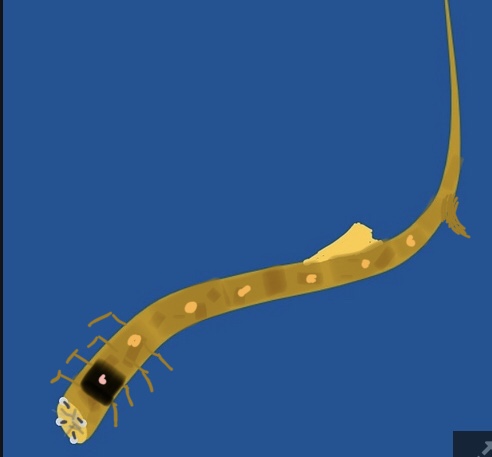
New species: chaneilinbheach
Old species: chaneilinbheach
Changes: not only has chaneilinbheach has increased size (up to 3.1 to 5mm) has also evolved shorter appendages that now work as sort of fins
New species: imisuna
Old species: acceleratio
Changes: some acceleratio have escaped into the deep sea divots and have evolved big eyes and also new sensory organs that sensores vibrations and also their “teeth” have evolved into crushing “teeth” to eat better algea
(Hope its not too much for one round)
New species: excogitatoris protectus
Old species: excogitatoris
Changes: excogitatorus protectus have evolved a bigger brain and also a skull that protects the brain and protects their eyes
Behavior: they now “build” small colonies where the eggs are hatched females go hunting in small packs 3-5 the oldest being the leader of the pack and the males protect their eggs after their eggs are hatched they go else where and most likely go back in the time of mating.
And if you want to know how they look on the outside here you go:
New species: cirra mhara coltach giganticus
Old species: cirra mhara coltach
Changes: mhara coltach has grown into bigger size (1cm -1.1cm)
No visual changes
i have a question- if we want to make a large change for a creature, but don’t know the stages of evolution, could we just wait a couple of rounds to make the large evolution?
Taking break today because I need to study for both a test and finish all my homework. Thanks for understanding!
Taking another break today, same test to study for and more hw  also i came home late so there’s that. I’ll definitely post on Friday, though! Making the sea-garden plants soon!
also i came home late so there’s that. I’ll definitely post on Friday, though! Making the sea-garden plants soon!
